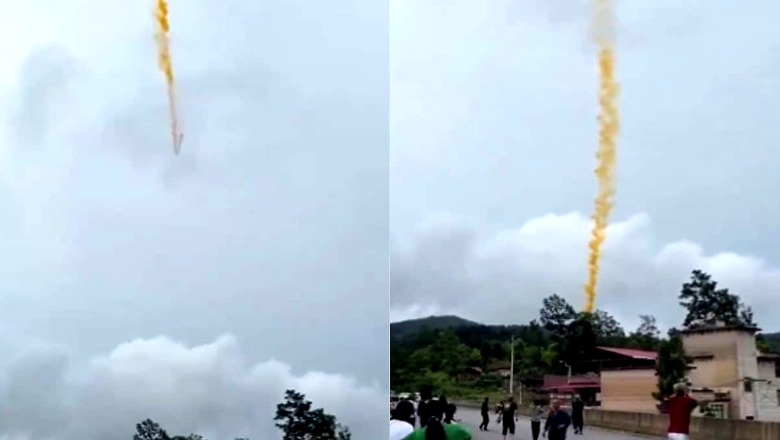
views
Rocket booster debris fell near a populated area in China during the launch of a satellite mission to study Gamma-ray bursts early Saturday.
The Long March 2C rocket, carrying the SVOM satellite, lifted off from Xichang Satellite Launch Center at 3:00 am Eastern on June 22. Despite the successful launch, debris from the rocket fell over a populated area shortly after liftoff, according to spacenews.com and videos on social media.
Behind the scenes of SVOM launch https://t.co/Fcc0OAY3ac pic.twitter.com/5fiM4oz2GY— China ‘N Asia Spaceflight ️ (@CNSpaceflight) June 22, 2024
The SVOM mission, a collaboration between China’s National Space Administration (CNSA) and France’s Centre national d’études spatiales (CNES), aims to investigate high-energy radiation from Gamma-ray bursts using advanced French and Chinese scientific instruments. These include the Microchannel X-ray Telescope (MXT) and a specialized X-ray focusing telescope.
Gamma-ray bursts are intense bursts of electromagnetic energy believed to occur during the deaths of massive stars or collisions between them. Understanding these phenomena could provide insights into stellar evolution and the formation of black holes. According to the space news portal, the launch incident involved a rocket booster falling near Guiding County in Guizhou province, China, as shown in a video circulating on social media.
People in the area were seen scrambling for safety as debris fell from the sky. The Long March 2C rocket uses hypergolic propellants, nitrogen tetroxide, and unsymmetrical dimethylhydrazine (UDMH), which are toxic and can pose health risks upon contact. China has a history of dealing with falling rocket debris from launches conducted at its inland sites.
These sites were originally chosen for security reasons during the Cold War era. Authorities typically issue warnings and evacuate areas deemed at risk during launches to mitigate potential injuries. The SVOM launch marked China’s 29th launch of the year, part of a broader plan to conduct around 100 launches in 2024, including commercial missions.


















Comments
0 comment